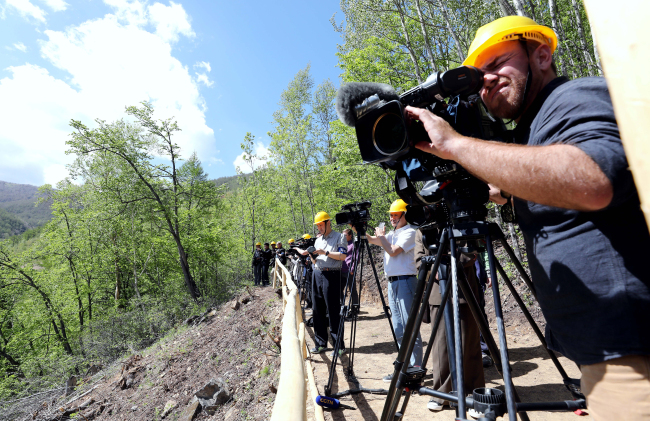 |
(Joint Press Corps) |
Traveling in dark
When South Korean reporters arrived at the Wonsan Airport from Seoul Air Base on a government-owned plane, security personnel took away radiation measuring equipment. One reporter, who had a pile of printed news articles naming Kim Jong-un without including his official title, was grilled about his “ideological problem” and had the printouts confiscated.
On their 12-hour trip to Punggye-ri site from port city of Wonsan, where a press center was located, the reporters were told not to open the blinds that covered the windows of the train. The train carrying the reporters only traveled at night and the ride was “unimaginably” bumpy, they said.
After getting off the train in Jaedokri, in Kilju Country in northern Hamgyong, they transferred to a bus for a 20-kilometer ride to the test site along a stream, passing by some small houses that they said seemed to be uninhabited. They did not pass a single person, apart from soldiers at seven military guard points, the reporters said.
At the test site, the reporters said they were allowed to relatively freely report on the event during their nine-hour stay there.
Details of explosion
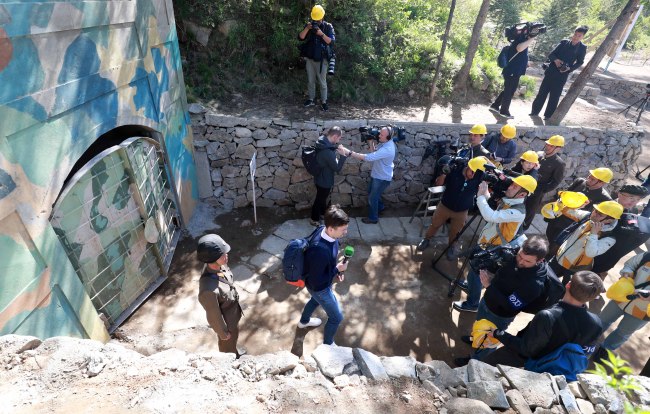 |
(Joint Press Corps) |
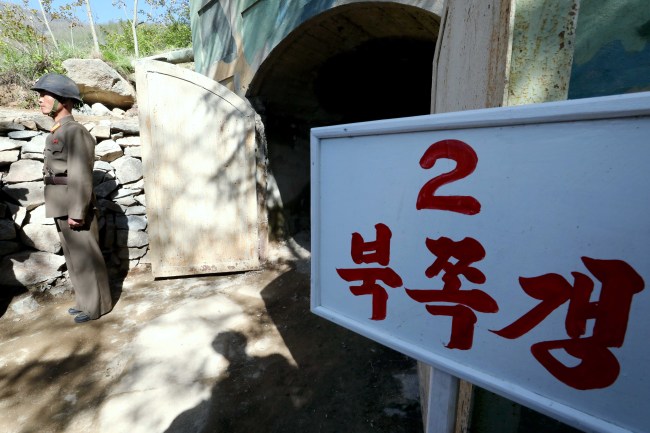 |
(Joint Press Corps) |
 |
(Joint Press Corps) |
Only about 30 meters of each tunnel was visible to the journalists looking in at the entrances, and the officials did not confirm whether the explosives were placed further inside the tunnels.
The closing of the Punggye-ri site marks North Korea’s first step to deliver on its promise to denuclearize, though the absence of nuclear experts at the scene stirred skepticism that the event was nothing more than a political show.
North Korea on Monday highlighted the importance of what it called “proactive, bald” measure to dismantle the nuclear site and said it is following its “own timetable” to join the international community in constructing a nuclear-free world in an article carried by North Korea’s state-run Rodong Sinmun.
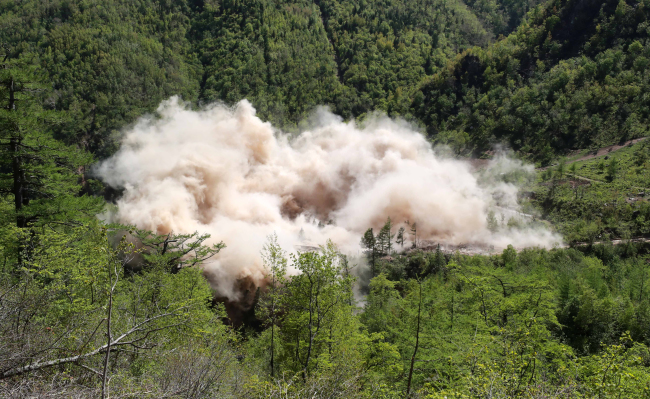 |
(Joint Press Corps) |
NK officials anxious
News of the canceled summit, initially scheduled for June 12 in Singapore, between North Korea and the US reached the journalists on the train as they were heading back from the Punggye-ri site to Wonsan. The sense of shock was palpable, they said.
Before the North Koreans blew up the tunnel No. 2, one of some five North Korean officials minding South Koreans signaled high expectation about US President Donald Trump and the summit during their lunch together, the reporters said.
“We had expectation about Trump, but he is such an unpredictable person,” a North Korean official was quoted as saying by the pool reporters.
In reaction to Trump’s cancellation of the planned meeting with Kim, the North Korean officials expressed worries over “whether hardliners like John Bolton (Trump’s national security adviser) and Mike Pence (US vice president) had gained momentum,” according to the reporters.
“We got an impression that North Korea wanted to hold a summit with the US and it had high expectations for South Korea to play a mediating role,” one of the reporters said.
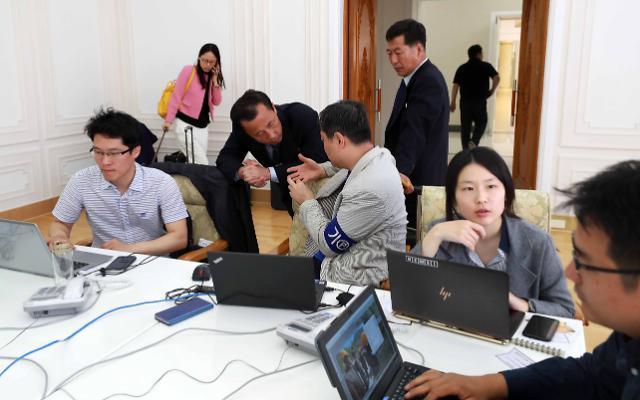 |
North Korean officials and South Korean reporters at a press center in Wonsan, Saturday. (Joint Press Corps) |




![[Exclusive] Hyundai Mobis eyes closer ties with BYD](http://res.heraldm.com/phpwas/restmb_idxmake.php?idx=644&simg=/content/image/2024/11/25/20241125050044_0.jpg)
![[Herald Review] 'Gangnam B-Side' combines social realism with masterful suspense, performance](http://res.heraldm.com/phpwas/restmb_idxmake.php?idx=644&simg=/content/image/2024/11/25/20241125050072_0.jpg)

